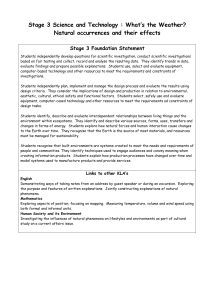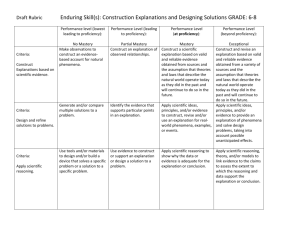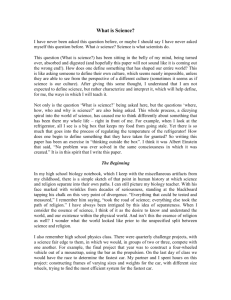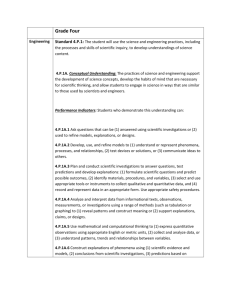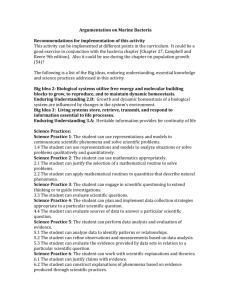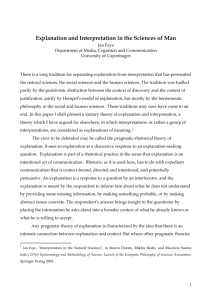File - KEDC Science
advertisement
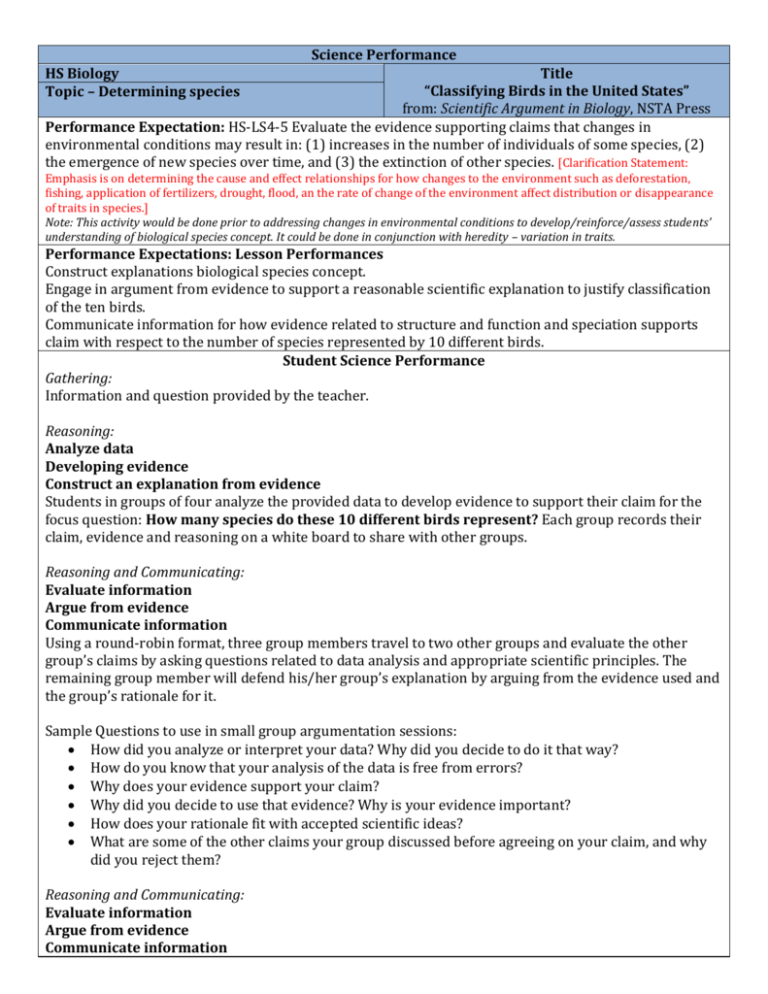
Science Performance HS Biology Topic – Determining species Title “Classifying Birds in the United States” from: Scientific Argument in Biology, NSTA Press Performance Expectation: HS-LS4-5 Evaluate the evidence supporting claims that changes in environmental conditions may result in: (1) increases in the number of individuals of some species, (2) the emergence of new species over time, and (3) the extinction of other species. [Clarification Statement: Emphasis is on determining the cause and effect relationships for how changes to the environment such as deforestation, fishing, application of fertilizers, drought, flood, an the rate of change of the environment affect distribution or disappearance of traits in species.] Note: This activity would be done prior to addressing changes in environmental conditions to develop/reinforce/assess students’ understanding of biological species concept. It could be done in conjunction with heredity – variation in traits. Performance Expectations: Lesson Performances Construct explanations biological species concept. Engage in argument from evidence to support a reasonable scientific explanation to justify classification of the ten birds. Communicate information for how evidence related to structure and function and speciation supports claim with respect to the number of species represented by 10 different birds. Student Science Performance Gathering: Information and question provided by the teacher. Reasoning: Analyze data Developing evidence Construct an explanation from evidence Students in groups of four analyze the provided data to develop evidence to support their claim for the focus question: How many species do these 10 different birds represent? Each group records their claim, evidence and reasoning on a white board to share with other groups. Reasoning and Communicating: Evaluate information Argue from evidence Communicate information Using a round-robin format, three group members travel to two other groups and evaluate the other group’s claims by asking questions related to data analysis and appropriate scientific principles. The remaining group member will defend his/her group’s explanation by arguing from the evidence used and the group’s rationale for it. Sample Questions to use in small group argumentation sessions: How did you analyze or interpret your data? Why did you decide to do it that way? How do you know that your analysis of the data is free from errors? Why does your evidence support your claim? Why did you decide to use that evidence? Why is your evidence important? How does your rationale fit with accepted scientific ideas? What are some of the other claims your group discussed before agreeing on your claim, and why did you reject them? Reasoning and Communicating: Evaluate information Argue from evidence Communicate information Traveling group members rejoin their spokesperson and share observations and information from other groups. Spokesperson shares questions, comments, and rebuttal from other groups. Group members revise explanation as deemed necessary. Communicating Argue from evidence Students individually write an argument to persuade another biologist that his/her claim is valid and acceptable. They should connect evidence for how genetic mutations and/or environmental changes account for changes in populations over time, which can result in reproduction isolation. Assessment: Score individual student explanations using the rubric for generating arguments. Science Essentials Science Practices Compare data to make sense of and explain phenomena. Analyze data Compare data and use comparisons as evidence. Developing evidence Reflect on data in light of others’ data about similar Construct an explanation from evidence investigations. Evaluate information Analyze and share findings. Argue from evidence Explain science phenomena. Communicate information Compare multiple explanations of the same science phenomena. Explain science observations using evidence. Evaluate multiple science explanations used to explain science phenomena. Share explanations with others. Work collaboratively to construct science explanations. Use evidence to support ideas. Use evidence to generate and support explanations. Use evidence to support arguments about science explanations. Determine the best evidence for a specific argument. Listen to others’ explanations. Read and understand scientific information. Use appropriate terminology and descriptions. Share science information with others through written and oral reports. Crosscutting Concepts Identify the causes of observed patterns in natural systems. Cause and effect Use evidence to support explanations for the Structure and function causes of phenomena. Compare multiple causes contributing to one phenomena. Investigate phenomena and describe the structure/function relationships. Develop explanations for phenomena based on structure and function relationships. Core Ideas Changes in the physical environment, whether naturally occurring or human induced, have thus Adaptation contributed to the expansion of some species, the Variation of Traits Natural Selection emergence of new and distinct species as populations diverge under different conditions, and the decline – and sometimes extinction – of some species. Natural selection leads to adaptation, that is, to a population dominated by organisms that are anatomically, behaviorally, and physiologically well suited to survive and reproduce in a specific environment. In sexual reproduction, chromosomes can sometimes swap sections during the process of meiosis, thereby creating new genetic combinations and thus more variation. Errors can occur during DNA replication and result in mutations, which are also a source of genetic variation.

